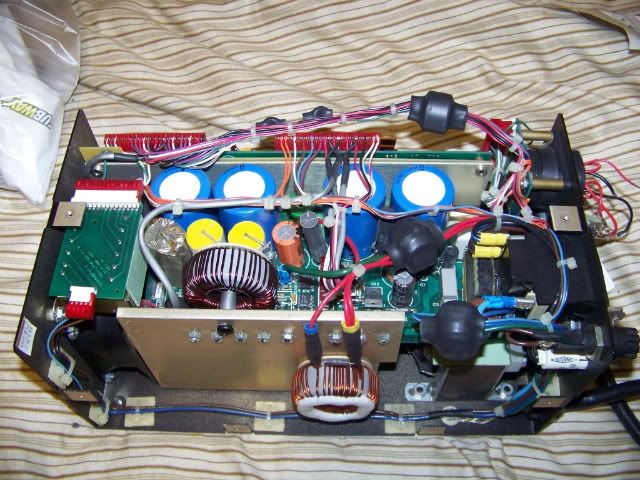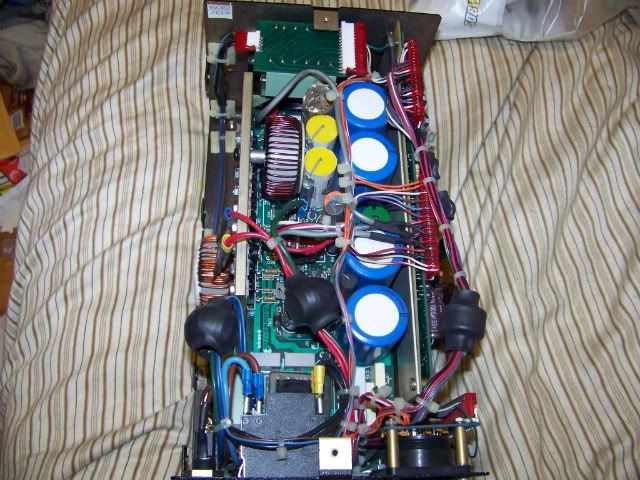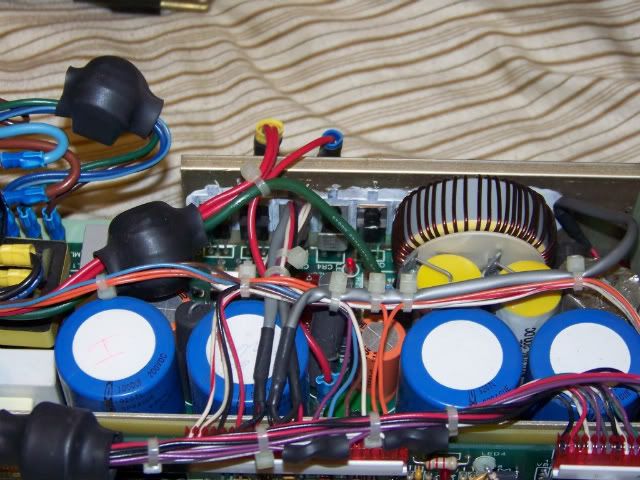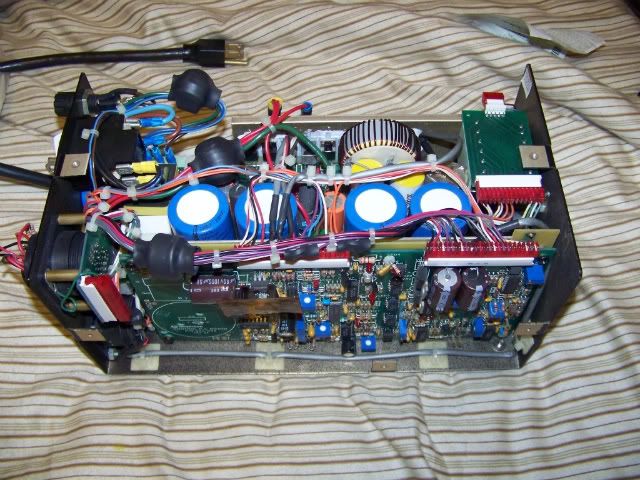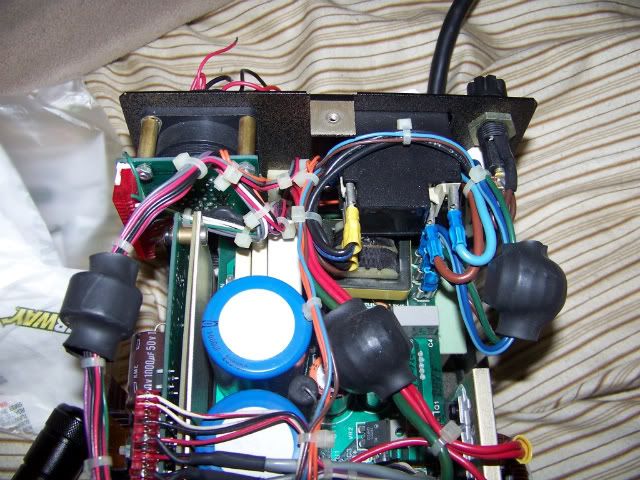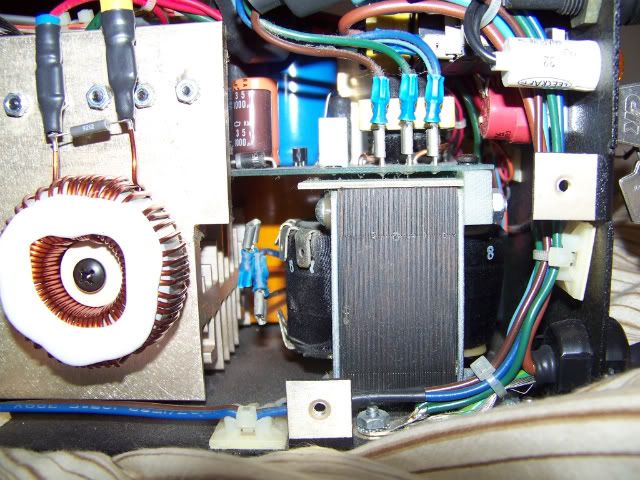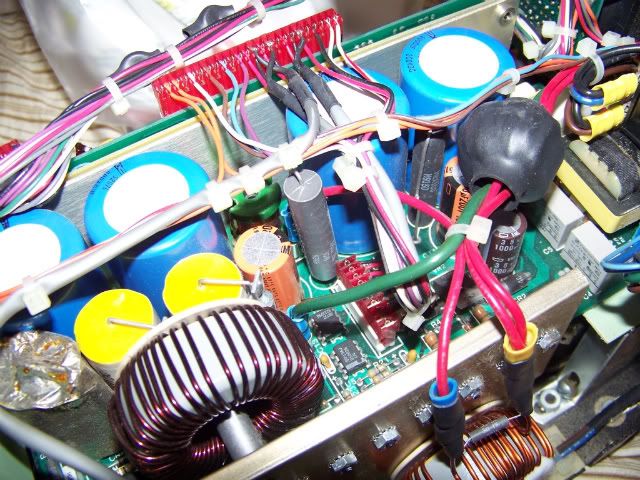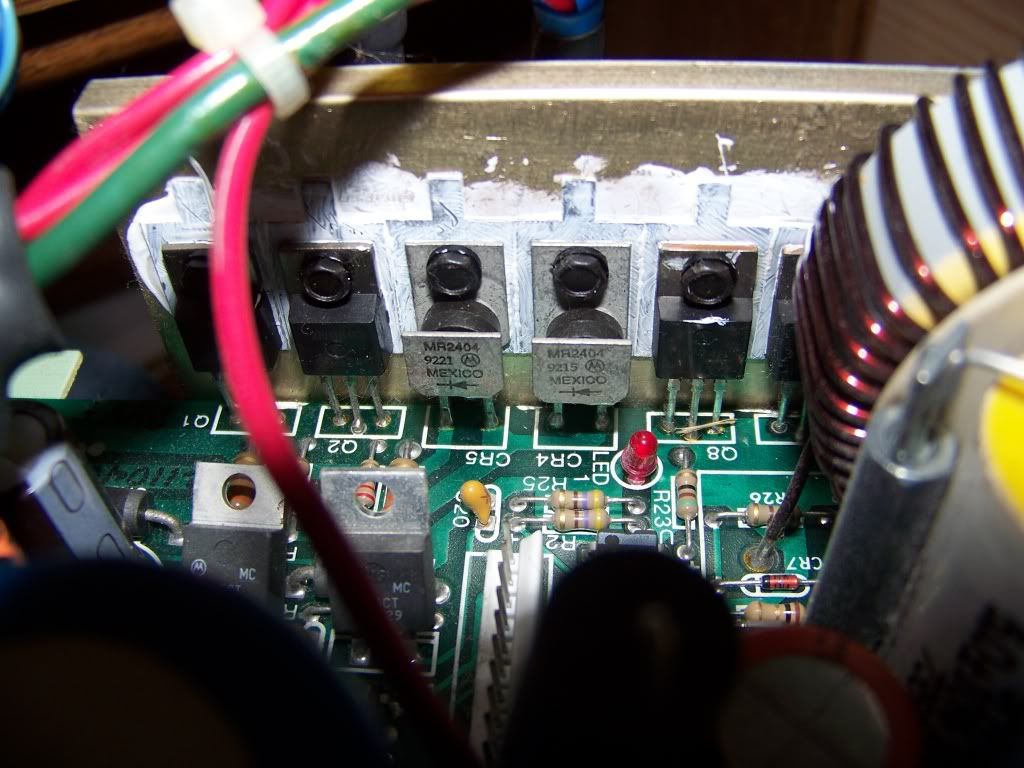Hi All,
This is my first post here! I hate to make my first post under these circumstances, but it seems as if my little argon has encountered a problem
I posted this over on alt.lasers, but I figured I would post here as well and see if I might get some more responses. Anyway, Here's my dilemma:
Earlier today a friend of mine came by the house to check out my Argon
lasers. Naturally, the first one I pulled out was my working cyonics/
uniphase laser. I got it all plugged in and turned on, let it idle for
a few then added some current to show the brightness. I took it up to
10A and then right back down. A minute or so later I went to turn it
back up and it blew the breaker. This is pretty common with my laser,
as the whole setup can draw up to 17A and it's only on a 15A breaker,
along with a couple other household electronics. Well, I fixed the
breaker and went to turn it back on, and the breaker blew right away.
As soon as I hit the power switch the breaker blew. The fan didn't
even turn an 8th of a turn (but it did move a tiny bit, showing that power did indeed make it to the fan for a split second (the fan runs on straight AC if that matters)), thats how quick it was. I figured the outlet or breaker may be bad, so I moved the setup to my 'trusted' location, where I constantly run the laser with no problems. Same thing. Breaker blew instantly. I was really hoping it wasn't a problem in the head of the laser, so I disconnected the head and tried just the PSU by itself. Same thing, breaker blown instantly. SOOO at least I've narrowed down the short or whatever it is to the PSU itself.
So, I'm going to perform some exploratory surgery on the power supply,
and I was just wondering what areas I should be checking for common
problems. This laser has run flawlessly since the day I got it, and
today was no different until it blew the breaker. When the breaker
blew I wasn't even up to full power yet, so I think the problem in the
PSU caused the breaker to blow, not the high current draw of full
power.
So, again, tips on things that are most likely to cause problems?
I think my poor laser got jealous ever since my new argon came into
the house. Either that or my friend is just bad luck!
Oh one last thing, how long should I let the PSU sit without any
power in it before opening it up? I really don't feel like discharging
all those caps through my body.
UPDATE:
I took the cover off and looked around a bit. There's nothing SUPER
obvious that I can see. I cant see any leakage around the big caps,
but then again these caps are pretty wide so if one is leaking, I may
not even be able to tell from the top looking down. I think the short
is on the a/c side, because I imagine if it were on the DC side, the
failure could have been a bit more dramatic... like maybe some smoke
or at least a burnt smell or something other than just the breaker
popping instantly, I could be wrong though... I'm just speculating.
I've been tracing the wires as best as I can (its pretty packed in
this thing), I think the short must be on the board side, like where
all those big filter caps are, since the straight AC that branches off
to the head still worked, since the fan moved a bit.
Anyone have any ideas? Things that typically go wrong in these power
supplies? This laser has been such a good little laser that it makes me sad to have it sitting in non-working condition
Thanks in advance for the help!!!!




 Reply With Quote
Reply With Quote buffo
buffo

